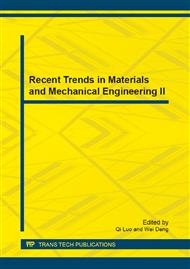p.167
p.177
p.185
p.194
p.202
p.209
p.215
p.222
p.230
MFS Heat Conduction Modeling of Composite Materials Reinforced by CNT-Fibers with Large Aspect Ratio
Abstract:
Carbon Nanotube (CNT) fibers, which are used to reinforce composite materials areoften associated within the aspect ratio values 103:1-106:1, sometimes even larger. The Method of Continuous Source Functions (MCSF) used for simulating fiber-matrix and fiber-fiber interaction uses 1D continuous source functions which are distributed along the fiber. The source functions serve as Trefftz (T-) functions, which can satisfy the governing equations which are inside the composite domain (composite matrix) and the boundary conditions on the fiber-matrix interfaces are satisfied through the collocation points along the fiber boundaries in the least square (LS) sense. For the presented heat conduction problems, the nanotube fibers are supposed to be super-conductive at the first stage. Temperatures and heat flows in the control volume (CV) enable to define homogenized material properties for corresponding patch of the investigated composite material.
Info:
Periodical:
Pages:
202-208
Citation:
Online since:
September 2013
Authors:
Keywords:
Price:
Сopyright:
© 2013 Trans Tech Publications Ltd. All Rights Reserved
Share:
Citation:


